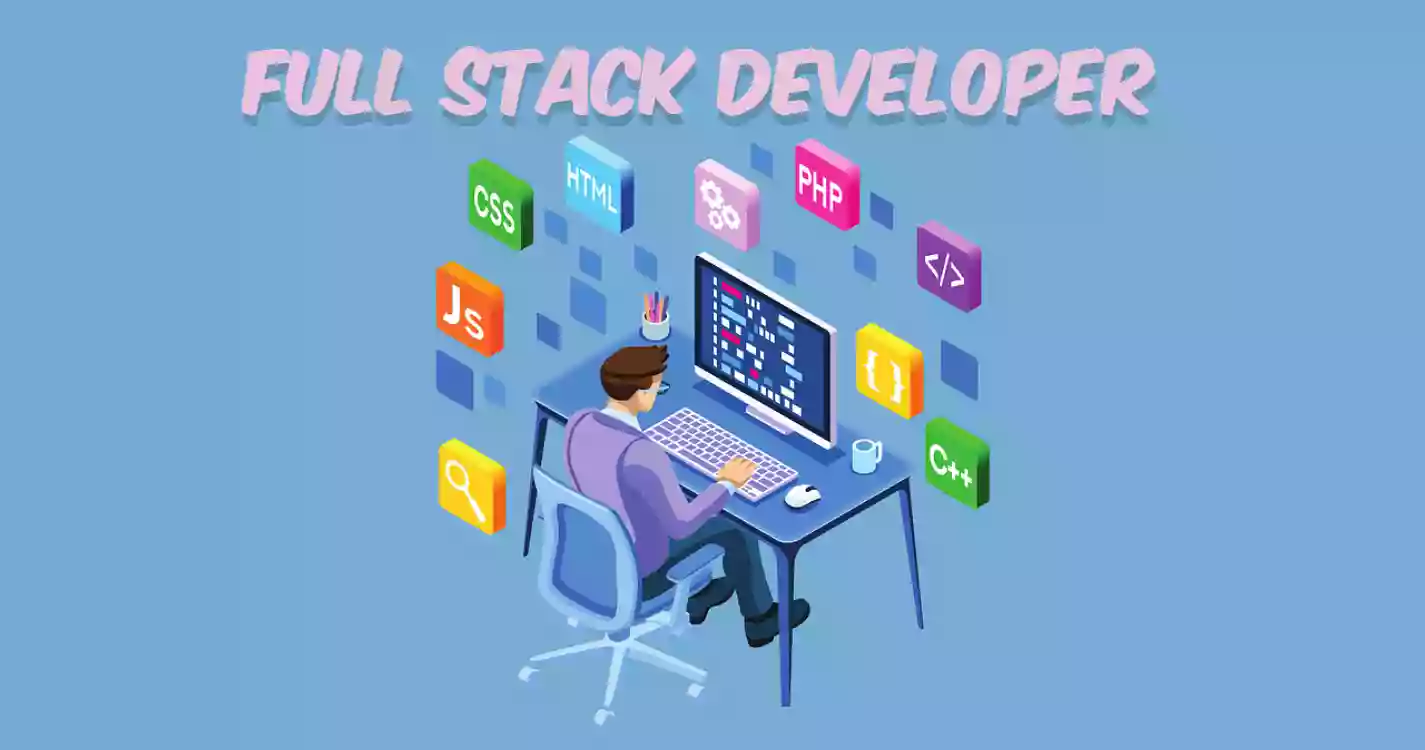How to become a full stack developer?
1015 Oct 2024
How to Become a Full Stack Developer: A Step-by-Step Guide
Becoming a full stack developer is a rewarding and versatile career path. As a full stack developer, you work with both the front-end (client-side) and back-end (server-side) of web applications, which gives you the flexibility to develop end-to-end solutions. Here"s a comprehensive guide to help you on your journey:

1. Understand What a Full Stack Developer Does
A full stack developer is responsible for both the front-end and back-end development of a web application. This includes:
- Front-end: The user interface (UI), what users interact with directly (HTML, CSS, JavaScript).
- Back-end: Server, database, and application logic that handles data and functionality.
Key full stack technologies include:
- HTML, CSS, JavaScript for front-end development.
- Node.js, Python, Ruby, PHP for back-end development.
- Databases like MySQL, PostgreSQL, MongoDB.
- Version control (e.g., Git), APIs, and DevOps tools.
2. Learn Front-End Development
The front-end is the part of a website or application users interact with. Start with the following:
- HTML (HyperText Markup Language): Learn to structure content on web pages.
- CSS (Cascading Style Sheets): Understand how to style and design the web pages.
- JavaScript: Learn JavaScript for dynamic functionality, such as form validation, animations, and DOM manipulation.
- Frameworks and Libraries:
- React.js: A popular library for building user interfaces.
- Vue.js or Angular: Consider learning a framework to structure large-scale front-end applications.
Helpful Resources:
- FreeCodeCamp for HTML, CSS, and JavaScript tutorials.
- MDN Web Docs for in-depth documentation.
3. Learn Back-End Development
The back-end manages the server, database, and application logic. You"ll need to learn:
- Programming Languages:
- Node.js: JavaScript runtime for server-side programming.
- Python: Widely used with frameworks like Django or Flask.
- Ruby: Known for Ruby on Rails, a beginner-friendly framework.
- PHP: A traditional language for web development.
- Frameworks:
- Express.js for Node.js.
- Django or Flask for Python.
- Databases:
- Learn how to use both relational databases (e.g., MySQL, PostgreSQL) and NoSQL databases (e.g., MongoDB).
- APIs (Application Programming Interfaces): Learn to create and consume RESTful APIs to connect front-end and back-end systems.
4. Version Control and Git
Version control is essential in modern software development. Learn to use:
- Git: A version control system to track changes and collaborate with other developers.
- GitHub: A platform to store your projects and collaborate with others.
Steps to Follow:
- Learn how to initialize a repository.
- Practice branching, merging, and pull requests.
5. Learn the Basics of DevOps
While not always required, understanding DevOps practices can help you manage the deployment and scaling of your applications:
- Continuous Integration/Continuous Deployment (CI/CD): Tools like Jenkins, CircleCI, or GitHub Actions.
- Docker: Learn how to containerize applications for consistent deployment across environments.
- Cloud Platforms: Basic knowledge of platforms like AWS, Azure, or Google Cloud can be beneficial.
6. Master Soft Skills
Technical skills are crucial, but soft skills are equally important for full stack developers:
- Problem-Solving: Strong analytical and problem-solving abilities to debug issues.
- Communication: You’ll often need to collaborate with designers, project managers, and other developers.
- Time Management: Handle multiple aspects of development efficiently.
7. Build Real-World Projects
One of the best ways to learn is by doing. Build full stack projects from scratch, incorporating both front-end and back-end components. Examples include:
- Personal Portfolio: A simple website to showcase your skills.
- Blog Platform: Develop a content management system (CMS).
- E-commerce Site: Create a basic store with shopping cart functionality.
8. Stay Updated and Keep Learning
The web development landscape evolves quickly, so it"s important to keep up with new trends and technologies:
- Follow Blogs, Podcasts, and Tutorials: Sites like Dev.to, HackerNoon, and CSS-Tricks can provide fresh insights.
- Open Source Contributions: Contributing to open-source projects helps you learn from others and improve your skills.
- Online Courses: Platforms like Coursera, Udemy, and Pluralsight offer up-to-date courses on full stack development.
9. Apply for Jobs and Internships
Start applying for full stack developer roles, internships, or freelance gigs. Entry-level roles often provide valuable mentorship and experience.
When applying, showcase your:
- GitHub portfolio with real projects.
- Experience with both front-end and back-end technologies.
- Problem-solving skills demonstrated through code samples or contributions to open-source projects.
10. Prepare for Technical Interviews
Once you’ve built your skills, prepare for technical interviews by:
- Practicing algorithms and data structures using platforms like LeetCode or HackerRank.
- Participating in coding challenges and hackathons.
- Reviewing common full stack interview questions on GitHub repositories or websites like InterviewBit.
Conclusion
Becoming a full stack developer requires dedication and consistent practice. By mastering both front-end and back-end technologies, understanding version control, and building real-world projects, you"ll be on your way to becoming a proficient full stack developer. Stay curious, keep learning, and always challenge yourself with new projects!
0 likes
Top related questions
No related question available! Ask Your Question.
Related queries
Latest questions
06 Sep 2025 19
08 Aug 2025 11
07 Aug 2025 14
06 Aug 2025 23
02 Aug 2025 22
31 Jul 2025 18
